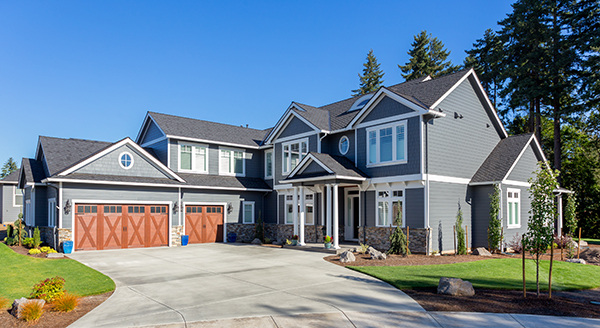Resilient Roofing Fights Against Climate Change
Author: Amy Freeman | October 31, 2024
People across the U.S. and around the world are seeing the impacts of climate change: longer periods of drought, more intense wildfires and heavier rains, according to NASA. More frequent and extreme weather events put added stress and strain on homes and roofs, increasing the need for resilient roofing.
To help your customers prepare for a changing climate, it helps to understand how climate change-related weather events can affect roofs, and what you can recommend to provide your customers with more sustainable, resilient roofing materials.

Weather and Roofing
Roofing materials are generally made to withstand typical weather conditions, such as rain, wind and temperature changes. However, extreme weather conditions can push a roof to its limits, especially if these conditions persist or become more common. Understanding how weather affects common roofing materials can help you make the right recommendations to clients.
High Heat
Officials have been keeping track of average daily temperatures since 1850, nearly 200 years. Since 2005, there has been a steady increase in global temperatures, with 2023 being the current warmest year on record. High heat affects roofing materials in a few ways. First, it accelerates wear, making asphalt shingles more brittle and prone to breakage. It can also cause materials to expand and contract, leading to leaking seams and cracks.
Strong Winds
Roofs are made to withstand some wind. However, as hurricanes and other high wind events become more frequent and stronger, roofs can struggle to keep up. High winds can tear off shingles, either individually or in entire sections.
Heavy Rains
Similarly, roofs are made to experience some amount of moisture exposure. They have gutters and drainage systems built in to reduce the risk of leaks and prevent flooding. However, during periods of heavy rain, gutters and drainage systems can easily become overwhelmed. The same is true if a roof is exposed to high humidity levels for a prolonged period.
Prolonged Droughts
On the opposite end of the scale, periods of dry weather and drought can also negatively impact roofing materials. Without adequate humidity, materials can become brittle and weakened. The longer drought persists and the drier roofing materials become, the greater the risk of fire damage.
Resilient Roofing Materials for Extreme Weather
To help your clients prepare for a warming world and the weather changes that accompany it, recommend roofing materials that can withstand various extreme conditions. Resilient roofing materials can take the following forms:
- For increased temperatures: Cool roofing systems can be as much as 50 degrees cooler than conventional roofs, making them an appropriate choice in areas experiencing higher temperatures. Often, cool roof systems feature light-colored asphalt shingles or metal tiles.
- For wind-prone areas: In areas that are seeing increased wind activity, whether it's hurricanes or tornadoes, consider recommending roofing materials that can withstand heavy winds and resist impact.
- For high-moisture areas: Take a two-pronged approach to battling water damage in areas that experience frequent, heavy rainstorms due to climate change: resilient roofing materials and proper drainage. Materials like tile roofing can better withstand regular water and moisture exposure. Also ensure that your customers' roofs have adequate drainage systems, to help whisk water away from the home, even in the middle of an intense storm.
- For drought-prone areas: Some types of roofing materials are more suitable for homes in drought-prone areas than others. For example, consider metal or tile roofs for your clients who live in drier regions, as asphalt shingles are more likely to dry out and become brittle during droughts. Ensuring the roof is properly ventilated, so heat doesn't become trapped, is also critical in drought-prone areas.
Sustainable Roofing Materials
As the impact of climate change becomes more evident, your customers may want to know what they can do to protect their roofs and fight back against a warming planet.
Sustainable roofing materials can increase a roof's resiliency while also offering some protection against climate change. For example, a green roof may help reduce water runoff, minimizing the impact on the stormwater system. Solar panels on a roof can help reduce the burden on a local electrical grid while capturing a source of renewable energy.
To cope with a changing planet, you need to be adaptable and aware of the impact weather can have on your customers' homes. Recommending the right materials to them will not only help protect their homes from damage but also increase their loyalty to your business.